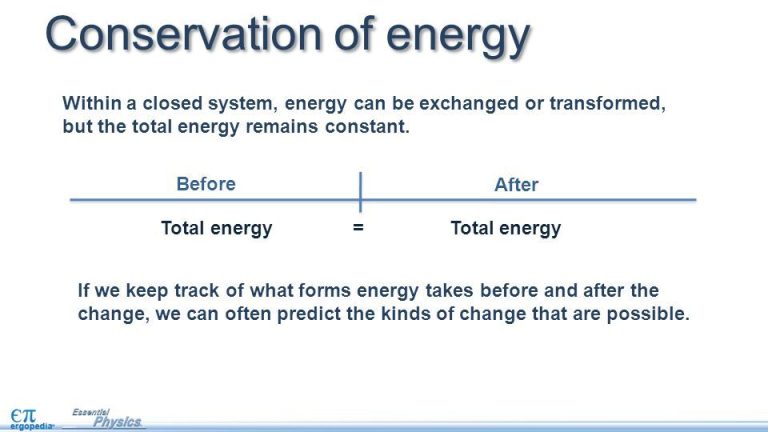Is 16 Kw Enough To Run A House?
Average Household Energy Use
When determining whether 16 kW is enough energy production for a home, you first need to understand how much energy the average household uses. Most homes in the U.S. use about 10,400 kWh per year. This energy use is divided amongst major appliances and systems:
- Heating and cooling (HVAC) – 43%
- Water heating – 18%
- Appliances (refrigerator, washer/dryer, dishwasher, etc) – 13%
- Lighting – 12%
- Electronics (TVs, computers, etc) – 4%
- Other (cooking, miscellaneous) – 10%
The amount of energy used by HVAC and water heating can vary greatly depending on climate and home efficiency. More efficient appliances like Energy Star models use significantly less energy for the same functionality.
Sizing a Solar System
When sizing a solar system, you first need to look at the home’s overall energy usage. This is calculated by reviewing past electric bills to determine the average amount of kilowatt-hours (kWh) used per month. Any significant electricity usage like electric vehicles, pools, or hot tubs needs to be factored in as well.
Once the home’s total energy usage is determined, the solar system is sized to match that. Most solar installers will recommend a system that covers 80-100% of the home’s needs, as that allows maximum solar production to offset grid electricity. Any excess solar energy produced can be sold back to the utility company through net metering programs.
The size of the solar system is measured in kilowatts (kW), which refers to the system’s total power output under ideal conditions. A general rule of thumb is that 1 kW of solar panels will produce 3-5 kWh per day. So for example, a 5 kW system could generate 15-25 kWh per day. This energy production estimate accounts for solar panel efficiency losses and deviations from ideal conditions.
When sizing the system, solar installers will consider the home’s rooftop space, electric bill history, energy efficiency, electricity rates, and incentives to determine the optimal system size to match the location and household’s usage.
Typical Solar System Size
The average size of residential solar systems in the U.S. is about 7-8 kW, according to 2021 data from the Solar Energy Industries Association. However, system sizes can vary greatly depending on factors like location, electricity usage, and available roof space. In sunnier states like California and Arizona, the average system size is around 9-11 kW. In less sunny areas, average system sizes are closer to 5-6 kW.
For a typical single family home that uses around 30 kWh per day, a solar system in the 6-8 kW range is usually sufficient to offset most or all of their electric bill. Two-story homes with more roof space may be able to accommodate 10-12 kW systems. Very large luxury homes sometimes install 20 kW or more.
When determining system size, it’s important to analyze the home’s electricity usage patterns and size the system to match the home’s needs. Oversizing the system won’t provide any additional benefit if the extra energy is not being used on-site or exported to the grid.
Energy Efficiency
Reducing your home’s energy use through efficiency upgrades is one of the best ways to determine if a smaller solar system will be adequate. Here are some ways to improve efficiency:
- Upgrade to LED lighting – Replacing all bulbs with LEDs can reduce lighting electricity use by 75% or more.
- Seal air leaks – Caulk and weatherstrip areas like windows, doors, and attic hatches to prevent drafts and improve insulation.
- Increase insulation – Adding insulation to attics, walls and crawlspaces can significantly reduce heating and cooling costs.
- Upgrade appliances – Choosing ENERGY STAR certified appliances when replacing old models can cut energy use substantially.
- Install programmable thermostats – Smart thermostats can optimize heating and cooling system runtimes to conserve energy.
- Improve hot water efficiency – Insulating tanks, adjusting temperatures, and replacing old heaters saves energy.
- Consider an energy audit – An assessment can identify the most impactful efficiency upgrades for your home.
Taking some of these steps before solar installation may allow a smaller system to sufficiently meet your needs.
16 kW Solar System Details
A typical residential solar system that produces 16 kW of power will consist of around 40-50 solar panels rated at 300-400 watts each. The exact number of panels will depend on the panel wattage and efficiency.
For a 16 kW system, most homeowners choose high-efficiency monocrystalline silicon panels rated around 320-350 watts. With 350 watt panels, you would need around 45-46 panels to achieve 16 kW. With 320 watt panels, you would need 50 panels.
The solar panels are wired together in series to form “strings” that produce the desired system voltage, which is usually 600-1000 volts. The strings are then connected in parallel to add up to the full system wattage.
The panels are mounted on the roof using racking systems specific for pitched or flat roofs. The racking holds the panels at the optimum tilt angle to maximize sunlight capture.
In addition to solar panels, the system will include one or more string inverters to convert the DC electricity from the panels into AC power for home use. For a 16 kW system, a typical inverter size would be 12-15 kW.
The system will also include monitoring hardware, disconnects/combiners, and wiring to safely integrate the system with the home’s electrical panel.
Properly installing a 16 kW solar system requires specialized skills, experience, and licensing. This size system will generally require a commercial crew for the installation rather than a standard residential solar company.
Net Metering
Net metering allows homeowners with solar panels to send excess electricity they generate back to the grid. Their utility company will then credit them for the extra electricity produced. This enables solar panel owners to effectively use the grid as a battery. Instead of only being able to use the electricity they generate right away, they can “store” it in the grid and use the credits later during times when they need additional electricity from the utility company, such as at night.
Net metering makes it easier for homeowners to size their solar system to match their overall annual electricity usage instead of their instantaneous peak demand. With net metering, they don’t have to worry as much about sizing their system to perfectly match their highest periods of electricity usage. The grid acts as supplemental storage and levels out the differences between peak production and usage. This enables appropriately sizing a solar system based on annual usage without oversizing it for those peak times.
Battery Storage
Using batteries to store excess solar energy is an important consideration for a home solar system. Since the sun only shines during the day, solar panels do not produce energy at night. Batteries allow households to store surplus solar energy produced during the day to use at night or during power outages.
There are a few battery options for home solar systems. Lithium-ion batteries have become a popular choice due to their high efficiency and long lifespan. Lead-acid batteries are also used frequently since they are more affordable, despite slightly lower performance. Battery capacity for most homes ranges from 10-20 kWh to meet overnight power needs.
Adding battery storage does increase the system’s upfront cost. However, batteries can provide backup power if the grid goes down and allow solar homeowners to maximize self-consumption of their system’s production. Many recent solar installations include batteries to enable energy independence and resilience.
Costs
The upfront costs of installing a solar system can seem high, but the long-term savings make solar power a wise investment for many homeowners. A 16 kW solar system will cost around $24,000-$48,000 for purchase and installation. However, thanks to tax credits, incentives, and renewable energy credits, the out-of-pocket costs are much lower.
Over the lifetime of the solar panels, which is typically 25-30 years, a 16 kW system can save $45,000 or more in energy costs. When you account for increasing electricity rates over that timeframe, the savings can exceed $100,000. Going solar also increases the value of your home and locks in low electricity rates for decades.
With no fuel costs and minimal maintenance, the majority of a solar energy system’s costs come at installation. But as solar expands and installation becomes more streamlined, those costs continue to fall. When weighed against the considerable long-term energy savings, solar power delivers an impressive return on investment for homeowners.
Incentives and Tax Credits
There are several rebates, incentives, and tax credits available to help reduce the cost of installing a residential solar system. The main ones to consider are:
– Federal Solar Investment Tax Credit (ITC) – This provides a 26% tax credit for systems installed in 2020-2022, 22% for systems installed in 2023, and 10% after 2023. There is no cap on the credit amount for residential systems.
– State/local rebates – Many states and utilities offer upfront rebates to lower the cost of solar panel systems. These can range anywhere from $500 – $1000 per kW installed. California, Massachusetts, and New York are some states with generous solar rebates.
– Net metering – This allows solar customers to get credit for excess energy sent back to the grid. The credits can be used to offset electricity purchases during nighttime/cloudy days. This effectively allows “selling” unused solar power back to the utility.
– Property tax exemption – Many states/counties offer a property tax exemption on the added value solar panels provide. This lowers property tax bills for homeowners with solar panel systems.
– Low-interest loans – Some states and municipalities provide low-interest loans (often 2-3% lower than market rates) to help finance solar panel systems. This reduces borrowing costs.
Checking for all available federal, state, and local incentives is highly recommended when installing a residential solar system. The savings can reduce the payback period by multiple years in some cases.
Conclusion
For the average home, a 16 kW solar system is likely more than enough to meet electricity needs. The typical home uses around 10,000 kWh per year, and a properly sized solar system is usually in the 6-8 kW range. With net metering, any excess solar electricity produced during the day can be fed back into the grid and credited to your utility bill. This allows solar systems to produce more than 100% of a home’s usage annually.
That said, homes with electric vehicles, pools, hot tubs and other high-energy appliances may require solar systems up to 16 kW or more. Families looking to power their entire home with solar, including running central AC for many hours per day, will also need larger systems. With battery storage, a 16 kW system could fully power a home independent of the grid.
In summary, while 16 kW is far more than the average home needs, it provides flexibility for high-energy households, electric vehicles, future expansion, and grid independence. For most homes, a properly sized 6-10 kW system is sufficient, especially with net metering.





